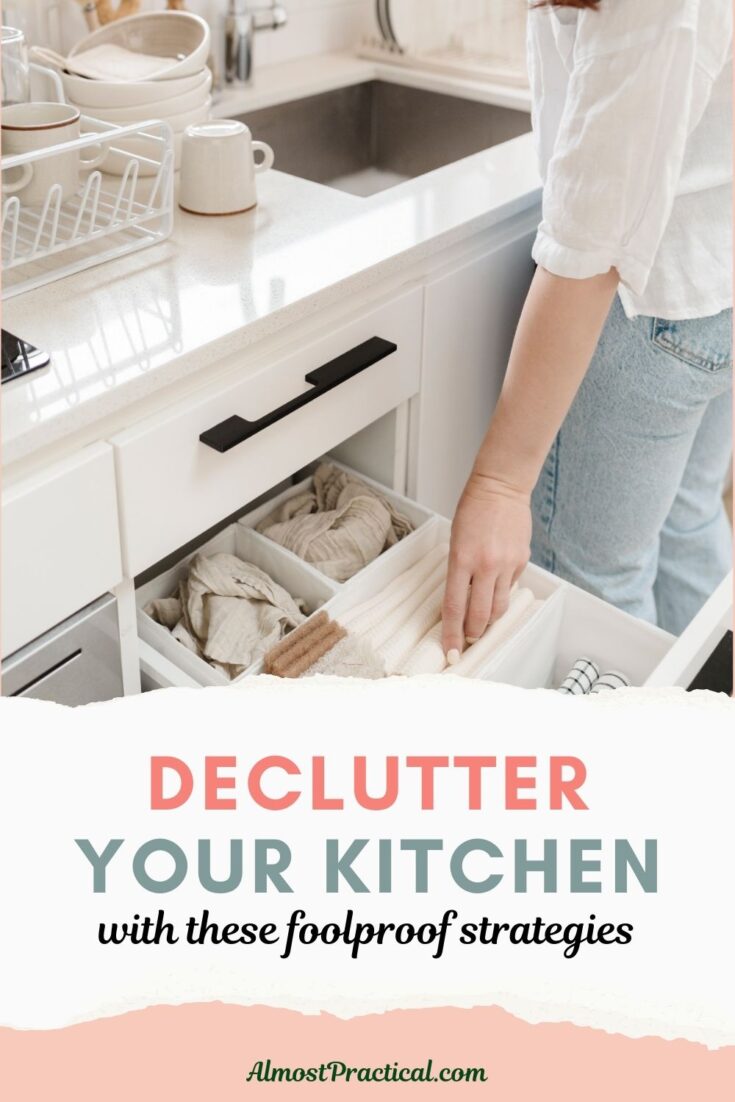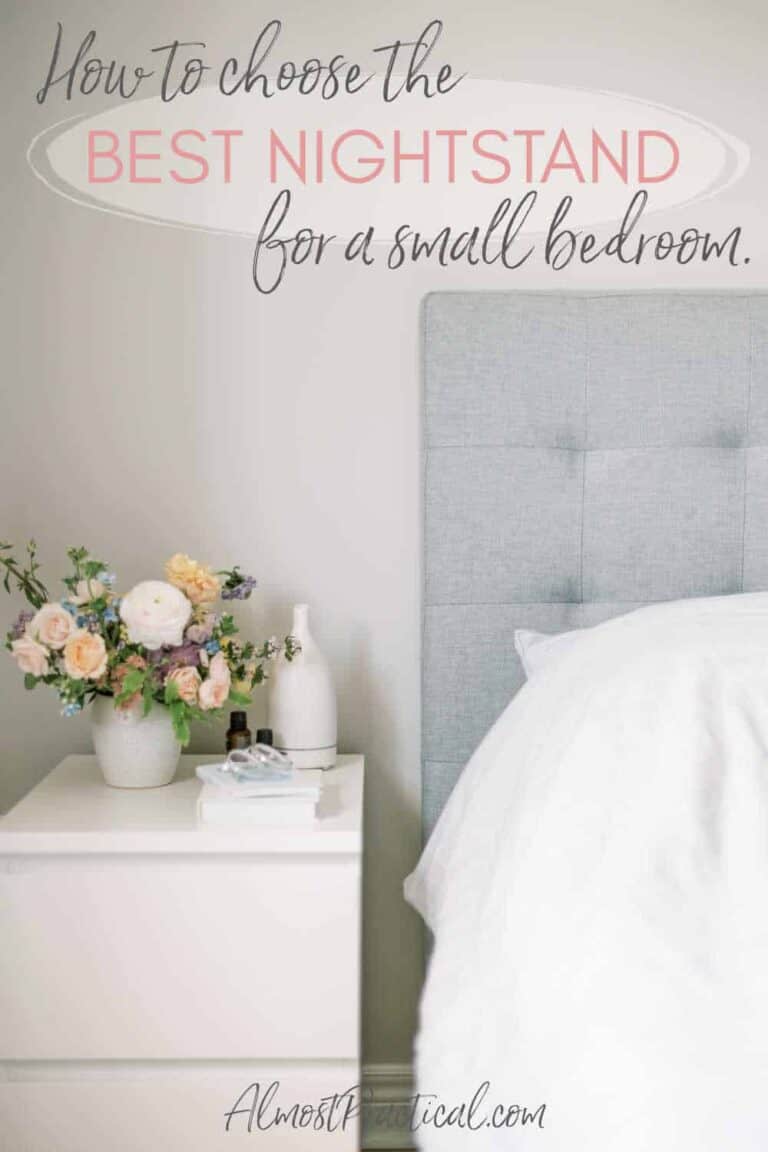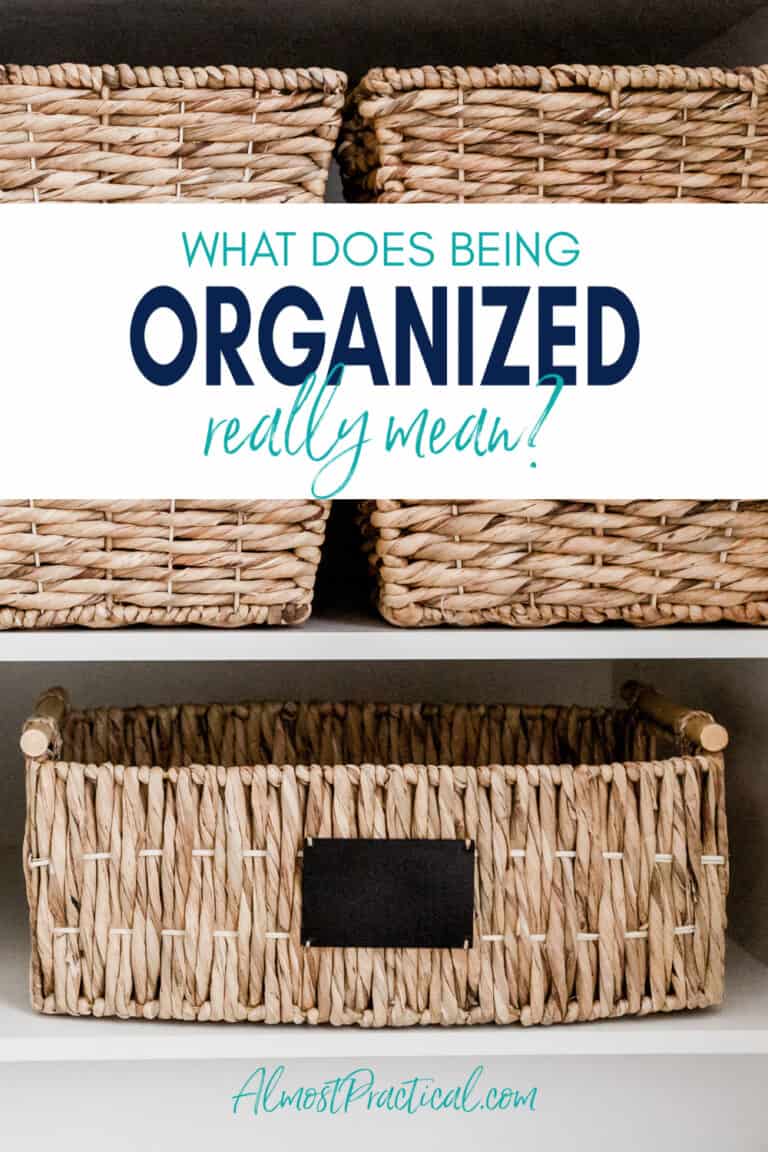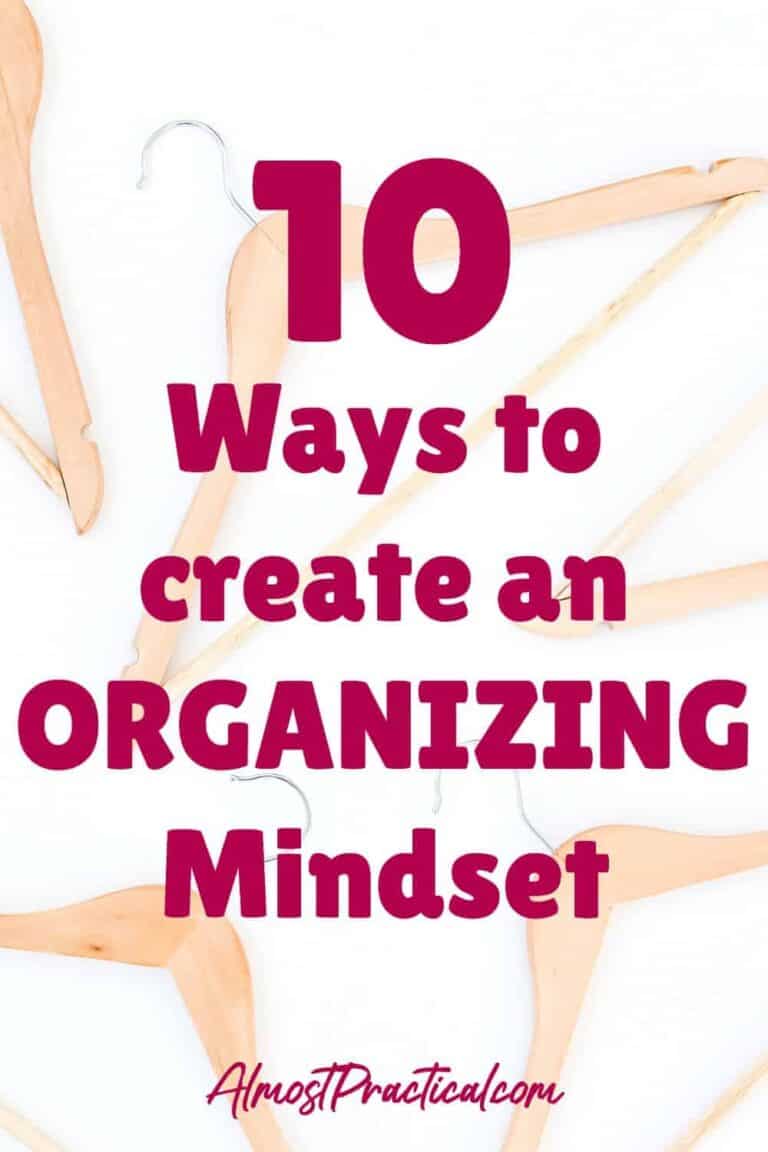Declutter Your Kitchen with These Foolproof Strategies
This post may contain affiliate links which means I make a commission if you shop through my links.
Disclosure Policy
What is it about kitchens that make them magnets for clutter? And it is not just the stuff you use for cooking – it is paperwork, books, laundry, backpacks, and other random things that find their way into this room and make an already busy space absolutely chaotic!
There are so many benefits to having a clutter-free kitchen – like reducing stress, keeping food fresh, maximizing space, and even saving money – but achieving and maintaining a tidy kitchen can seem like a monumental task, especially when we have so many other things to do that take priority.
The good news is that the hardest part is the initial decluttering. Once you get there, keeping the kitchen clean only requires a few minutes on a daily basis.
In this blog post, we will explore some effective decluttering strategies to help you transform your kitchen into a streamlined and organized haven.

Step 1: Assess and Prioritize
Begin your decluttering journey by taking a critical look at your kitchen space.
Identify items that you rarely use, duplicates of things that you already have, and items that no longer serve a purpose.
Take a page from Marie Kondo’s book The Life Changing Magic of Tidying Up – and be sure to prioritize keeping essentials and items that bring you joy or hold sentimental value.
This step sets the stage for a more mindful and intentional approach to organizing your kitchen.
Step 2: Clear Countertops
One of the quickest ways to create a sense of order in your kitchen is by decluttering countertops.
Ideally, your countertops should be used as a workspace and not for storage. I know this can be tricky, especially if you have a small kitchen with minimal cabinet and drawer space.
But if you get creative and think outside the box you might be able to come up with some alternate solutions.
Think about investing in storage solutions like floating shelves or hanging racks to keep essentials within reach without sacrificing visual appeal.
For example, you can use one of these wall mounted coffee cup organizers to store mugs, which then will free up some cabin space that you can use to get something off your countertop.
Appliances that you don’t use frequently tend to be counter space hogs and are better stored in cabinets, a pantry, drawers, or even in a different room, to free up valuable kitchen real estate.
Better yet, decide if you really need the item at all. Some appliances duplicate functions of other appliances – so maybe you don’t need both.
For example, if space is tight, using a stove top tea kettle might be a better option than an electric tea kettle that sits on the counter top.
Another thing to consider is getting rid of your large knife block and using a drawer knife organizer instead.
Step 3: Organize Cabinets and Drawers
When it comes to organizing, everything is a chain reaction.
By moving things off your counters, you may be creating a cluttered situation in your kitchen cabinets and drawers.
So, the next step is to maximize the efficiency of your kitchen storage by organizing the cabinets and drawers.
To do this, group similar items together, such as pots and pans, utensils, or baking supplies.
Use drawer dividers, shelf organizers, and stackable containers to maintain order and make items easily accessible.
Discard expired or unused items to create additional space.
Step 4: Adopt a Minimalist Mindset
The hardest part about decluttering is getting rid of things that still have a useful life. Even if you haven’t used something in YEARS, you still feel like you need to hold on to it because one day it might come in handy.
Resist the temptation to hoard unnecessary gadgets, appliances, or excess cookware.
For example, I often have to organize my water bottle and travel mug cabinet and pare it down because somehow those things keep multiplying!
Take a minimalist approach to organizing because it not only reduces visual clutter but also makes it easier to maintain a clean and organized kitchen in the long run.
Embrace this minimalist philosophy by keeping only what you truly need and love.
Step 5: Invest in Smart Storage Solutions
Once you have decided what you plan to keep it is time to explore innovative storage solutions to make the most of your kitchen space.
Lazy Susans, pull-out shelves, and vertical dividers can help to optimize and maximize your kitchen storage space in cabinets and pantry areas.
Consider clear containers for dry goods to easily identify and access ingredients.
Take advantage of underutilized spaces such as the back of cabinet doors for additional storage.
But before you purchase anything, be sure to measure your drawers and cabinets carefully to make sure the organizers you buy will actually fit.
You can explore some kitchen storage solutions in my Amazon Store here.
Step 6: Establish Zones
The last thing you want is a decluttering project every time you have to cook.
So, creating designated zones in your kitchen for specific activities, such as food preparation, cooking, and cleaning is essential.
This can help to streamline your workflow and also ensures that everything has its place.
Labeling zones or using color-coded storage containers can further enhance organization and make it easier for everyone in the household to maintain order.
Step 7: Regular Maintenance:
Remember that decluttering is an ongoing process, not a one-time task.
Set aside time regularly to assess your kitchen and address any emerging clutter.
You have worked hard to get to this point so respect the time that you have invested by making it a habit to return items to their designated places after use and thus reinforcing the organization system you’ve established.
Enjoy Your Clutter Free Kitchen
A tidy kitchen is not only aesthetically pleasing but also contributes to a more enjoyable and efficient cooking experience.
By following these effective decluttering strategies, you can transform your kitchen into a well-organized space that enhances both functionality and visual appeal.
The key to maintaining a clutter-free kitchen is consistency and a commitment to a more mindful approach to your living space







